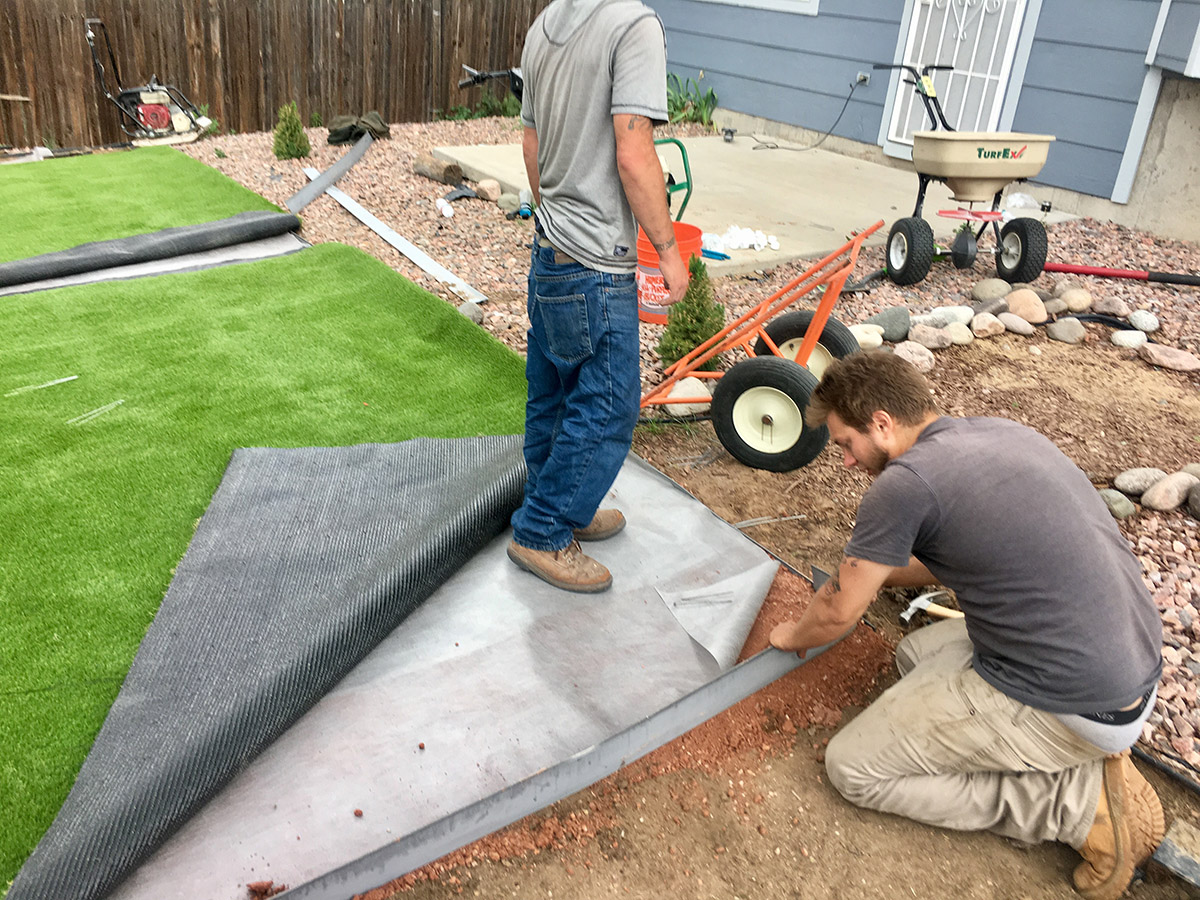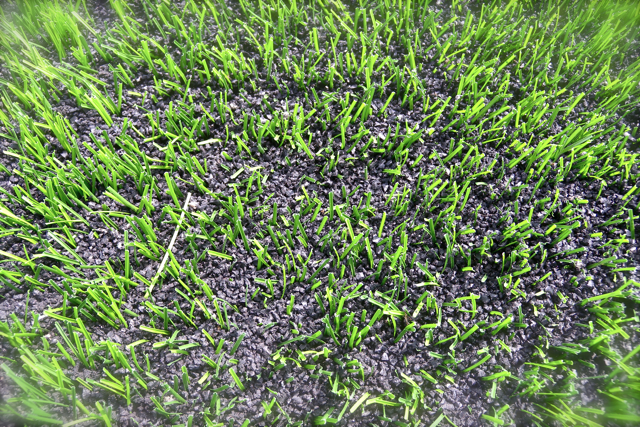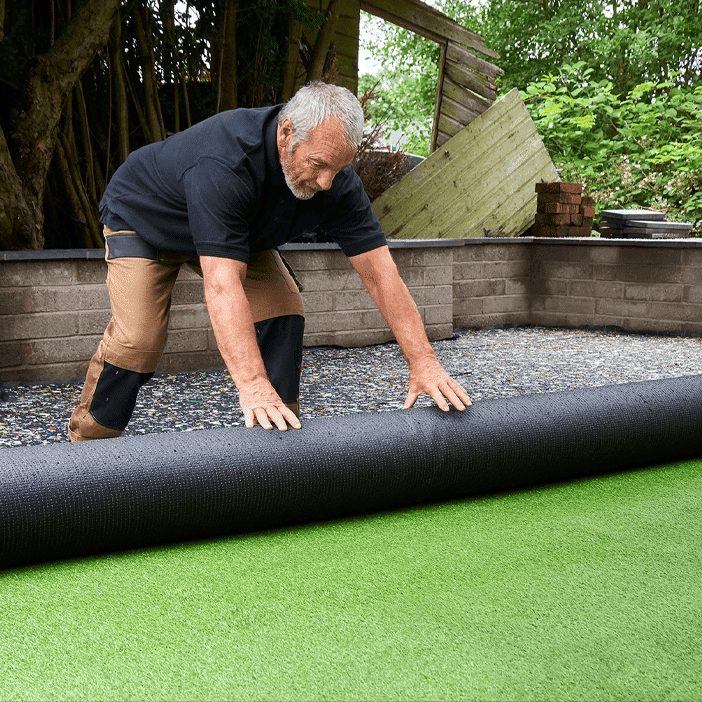Look Into the Environmental Advantages of Opting for Synthetic Grass Solutions
The adoption of synthetic grass solutions presents a compelling chance to attend to pressing ecological challenges. By dramatically lowering water usage and reducing the application of dangerous chemicals, these choices not only advertise sustainable landscape design yet also safeguard neighborhood communities. In addition, the lower carbon footprint connected with decreased upkeep tasks contributes to a more lasting strategy to land monitoring. Nonetheless, the implications of these advantages extend past simple preservation efforts, raising questions regarding their lasting effect on environment preservation and general environmental balance. Discovering these measurements reveals a complex interaction worth taking into consideration.
Water Preservation Perks
One of the most considerable benefits of fabricated turf is its capability to save water. In comparison, artificial grass does not need watering, dramatically lowering the total need for water resources.
By getting rid of the need for routine watering, fabricated turf adds to lasting landscape practices and aids reduce the environmental impact of too much water intake. Moreover, the preservation of water encompasses the reduction of runoff, which can bring about soil disintegration and waterway contamination.
In addition, the setup of synthetic grass permits homeowners and towns to assign water sources extra efficiently, focusing on necessary uses such as alcohol consumption water and agriculture. The change in the direction of synthetic grass not only promotes liable water use but also aligns with wider environmental goals focused on maintaining all-natural resources.
As areas progressively focus on sustainability, the water preservation benefits of man-made lawn provide an engaging instance for its adoption in business and residential landscaping projects.
Minimized Chemical Usage
The transition to synthetic turf substantially reduces the dependence on chemical therapies generally used in natural lawn upkeep. Traditional grass management normally entails the application of plant foods, pesticides, and herbicides to advertise growth and control parasites. These chemicals can posture threats to human health and wellness, neighborhood wildlife, and the atmosphere, adding to soil and water contamination.
On the other hand, fabricated lawn eliminates the demand for these dangerous substances. Once installed, it needs very little upkeep, primarily including regular cleansing and seldom infill replenishment. This reduction in chemical usage not only profits the instant setting yet likewise adds to wider ecological stability. By minimizing the release of synthetic substances right into the community, synthetic grass promotes much healthier dirt and water supply.
Additionally, the lack of chemical drainage connected with man-made lawn installations helps secure regional rivers from pollution, supporting aquatic life and maintaining biodiversity. Artificial turf companies phoenix. As neighborhoods progressively prioritize sustainable methods, selecting synthetic grass provides a practical service that aligns with environmental conservation objectives. Via this change, homeowner can appreciate lavish environment-friendly spaces without compromising ecological wellness, leading the method for a much more sustainable future
Lower Carbon Impact

In addition, the installation of synthetic grass can result in substantial water preservation. All-natural lawns need considerable quantities of water for watering, which not just includes in the carbon impact related to water removal and therapy but additionally stress regional water sources. On the other hand, synthetic grass needs very little upkeep, calling for no watering, consequently substantially lowering water use and its linked power expenses.
Additionally, the long life of synthetic grass adds to its decreased carbon influence. With a life expectancy of up to 15 years or more, the need for frequent replacements is diminished, resulting in less waste and lower power intake in production and getting rid of standard lawn options. Generally, synthetic grass provides a lasting choice for ecologically conscious landscaping.
Environment Conservation
Environment preservation is a vital consideration in the argument over landscaping options, especially when comparing synthetic grass to all-natural lawn. Natural grass yards usually need substantial maintenance, including using fertilizers, herbicides, and chemicals, which can negatively affect local ecosystems. These chemicals can seep right into the soil and waterways, harming indigenous flora and fauna and interfering with regional habitats.
Artificial turf gets rid of the requirement for unsafe chemicals, thus securing neighboring wild animals and keeping the integrity of surrounding ecosystems. The installment of artificial lawn can lead to the conversion of former grass areas into more biodiverse landscapes, such as pollinator yards or native plant areas, which can support neighborhood wild animals.
Inevitably, the change to synthetic grass not just saves water and minimizes maintenance efforts yet additionally promotes a more unified partnership between human activities and the natural setting, advertising habitat conservation while doing so.
Long-Term Sustainability
Long-lasting sustainability is a critical factor in reviewing the benefits of synthetic lawn over typical lawn lawns. Among the most significant advantages of synthetic grass is its longevity; it can last as much as 15-20 years with minimal upkeep, whereas natural yard needs constant reseeding and replacement. This longevity lowers the requirement for constant sources, such as water, fertilizers, and chemicals, which are important for keeping a healthy grass yard.
Additionally, fabricated lawn adds to a reduction in carbon discharges connected with grass treatment equipment. Typical grass commonly need gas-powered lawn mowers, leaners, and blowers, all click to read more of which add to air contamination. Artificial turf companies phoenix. On the other hand, fabricated turf gets rid of the demand for such equipment, advertising a cleaner setting
In addition, the manufacturing of synthetic grass significantly utilizes recycled materials, boosting my latest blog post its sustainability account. As manufacturers embrace eco-friendly practices, the ecological impact of artificial turf remains to reduce.

Verdict
The adoption of artificial lawn services offers considerable environmental benefits, including considerable water conservation, minimized reliance on unsafe chemicals, and a lower carbon impact. Furthermore, synthetic grass help in preserving all-natural environments by reducing land disruption and promoting long-lasting sustainability via the use of sturdy materials. Jointly, these factors emphasize the possibility of synthetic grass to add positively to environmental health and wellness and offer a feasible choice to traditional landscaping methods in a significantly resource-conscious world.
In contrast, synthetic grass does not require watering, significantly decreasing the general need for water sources. By decreasing the release of synthetic compounds into the community, man-made lawn advertises healthier soil and water systems.
Additionally, the setup more information of synthetic grass can result in considerable water preservation. In comparison, man-made lawn requires very little upkeep, needing no watering, consequently dramatically lowering water use and its linked power expenses.

Comments on “Tailored Turf Installation Phoenix AZ for Residences, Companies, and Recreational Spaces”